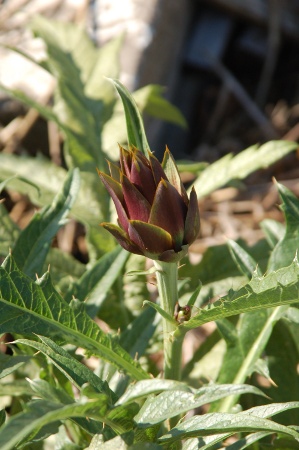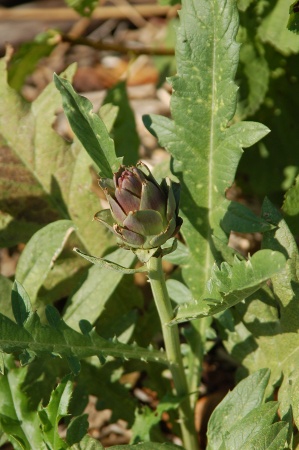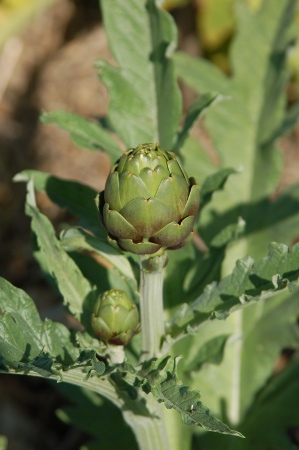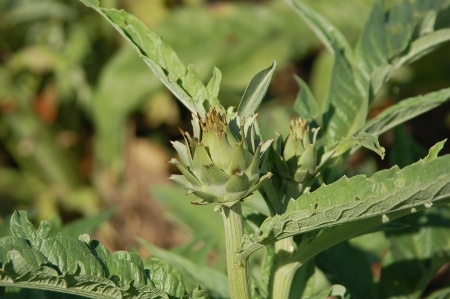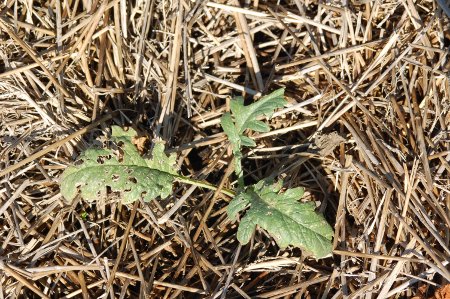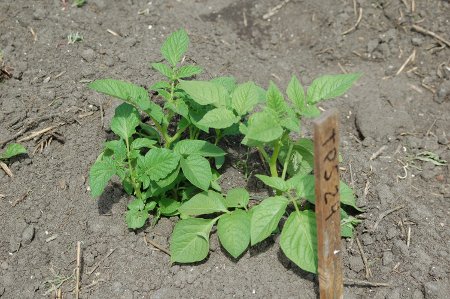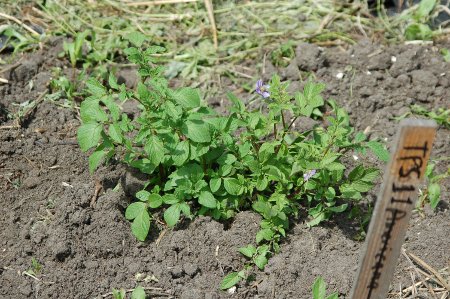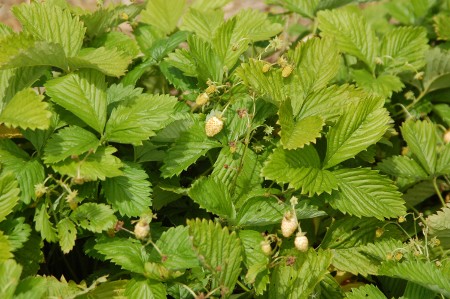I’ve been exchanging emails with Barrett, a reader and fellow garlic grower, and he’s come across an interesting garlic and is wondering if any of you out there have any more information about it for him.
Here are some excerpts (with permission) from his emails:
Thanks for offering to help. I appreciate the difficulty in trying
to determine a garlic variety in this way. On my own, I could possibly hope to narrow to Rocambole vs. Purple Stripe classification. I’m hoping to be able, with your help, to possibly narrow further. I’ve also read the Volk paper, so I understand those classifications are not perfect. A short list of possibilities is probably the best I can hope for. Ideally, I might be able to learn more about the actual origins of this particular cultivar.I ordered the the garlic, called “H&A” by the seller (Baker Creek Heirloom Seeds) and the description only listed as “rare hardneck”. I contacted Baker Creek for more information, but the grower Merlyn Neidens had passed away, so no further inquiries could be made.
So that is the history. The bulbs I received were medium to extra large. This was my first year harvest, so I only got medium to large bulbs. The bulbs I planted had silvery white wrappers, which tan to brown clove wrappers (to the best of my recall). At the time, I guessed it was a rocambole variety.
After growing however, I’m more inclined to believe PS, possibly marbled subgroup (see photos). The scapes typically did a 270 degree curl, though a couple had the rocambole style double loop. The bulbs had characteristic purple stripes initially. One bulb that I peeled fresh seemed to develop more purple coloration as it cured in my kitchen. The other bulbs when cured tended more toward silvery to white outer wrappers with some purple showing through.
The clove wrapper on many cloves is incomplete/split, as seen in the open bulb photo. The bulbils are still maturing, but look largish and few (approx 15-20 at a guess) from what I’ve read, this indicates a leaning toward rocambole again, but doesn’t rule out PS. There is only a single layer of cloves, 8-10 per bulb, but that doesn’t really help much.
Photo link:
http://picasaweb.google.com/bgreyt/Garlic?authkey=Gv1sRgCKia0MeP2punKg&feat=directlink
I suggested to him that it seemed like it may be a creole type, mostly because of it’s color and clove shape, and I also found a reference to it on the Internet with this link:
http://rpagarlic.blogspot.com/2008/07/2008-garlic-crop-is-harvested.html
This was his reply:
So, I have an update on tracking down H&A origins. Turns out the link you found was the source for Merlyn. So I can trace mine to them. They say they got it from a place called Dakota Garlic, which appears to be defunct. I’m trying to get in touch with the former owner to see if he can tell me where he got it (and so on).
So, does anyone have any more information or ideas about this garlic?



